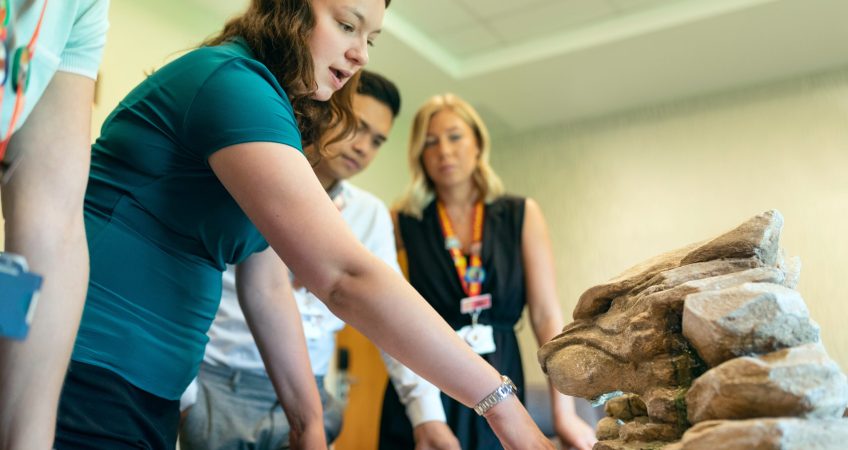London, a bustling metropolis renowned for its vibrant culture and iconic architecture, is also a city at the forefront of sustainability. With increasing awareness of climate change and the importance of reducing carbon footprints, many Londoners are seeking ways to make their homes more eco-friendly. From embracing renewable energy solutions to incorporating sustainable materials, there are numerous ways to transform your living space into an environmentally conscious haven.
Here are five eco-friendly home design ideas tailored for Londoners, complete with actionable steps to help you achieve a greener lifestyle.
1. Embrace Renewable Energy Solutions
One of the most impactful ways to reduce your home’s carbon footprint is by incorporating renewable energy sources. London’s weather might be unpredictable, but that doesn’t mean solar energy is off the table.
Solar Panels
Installing solar panels on your rooftop can significantly reduce reliance on non-renewable energy. Modern photovoltaic (PV) systems are designed to work efficiently even in cloudy conditions. In London, homeowners can take advantage of government schemes like the Smart Export Guarantee (SEG), which allows you to earn money by selling surplus energy back to the grid.
Key Benefits:
- Lower electricity bills.
- Reduced dependence on fossil fuels.
- Increased property value.
Wind Turbines
While not suitable for every property, small wind turbines can be an excellent addition to homes with ample outdoor space. They’re particularly effective in areas of London with consistent wind flow.
Action Tip: Before investing in renewable energy systems, consult with an energy efficiency expert to assess your property’s suitability.
2. Incorporate Sustainable Building Materials
When renovating or building a home in London, opt for materials that have a low environmental impact. Sustainable materials are not only eco-friendly but often durable and aesthetically pleasing.
Reclaimed Wood
Reclaimed wood can be used for flooring, furniture, and decorative accents. By repurposing wood, you reduce the demand for new timber and prevent perfectly good materials from ending up in landfills.
Bamboo
Bamboo is a fast-growing, renewable resource that’s ideal for flooring and cabinetry. It’s durable, stylish, and comes in various finishes to suit any design aesthetic.
Recycled Glass and Metal
Incorporate recycled glass in kitchen countertops or use recycled metal for fixtures and fittings. These materials add a contemporary touch while promoting sustainability.
Action Tip: When sourcing materials, look for certifications like FSC (Forest Stewardship Council) or Cradle to Cradle to ensure they meet sustainability standards.
3. Maximize Energy Efficiency
Improving your home’s energy efficiency is crucial for reducing energy consumption and lowering utility bills. London’s older properties often struggle with heat retention, making upgrades essential.
Insulation
Proper insulation can dramatically improve your home’s energy efficiency. Insulate your walls, loft, and floors to prevent heat loss during winter and keep your home cool in summer.
Recommended Materials:
- Sheep’s wool: A natural, biodegradable option.
- Cellulose: Made from recycled paper, it’s both eco-friendly and effective.
Energy-Efficient Windows
Upgrade to double or triple-glazed windows to enhance thermal efficiency. Look for options with low-emissivity (low-E) coatings to minimize heat loss.
Smart Thermostats
Install a smart thermostat to optimize your energy usage. These devices allow you to control your heating and cooling systems remotely, ensuring efficiency even when you’re away.
Action Tip: Take advantage of government incentives like the Energy Company Obligation (ECO) scheme to subsidize insulation and energy-efficient upgrades.
4. Adopt Sustainable Water Management Practices
Water conservation is an integral part of eco-friendly home design, especially in urban areas like London, where resources can be strained.
Rainwater Harvesting
Install a rainwater harvesting system to collect and store rainwater for non-potable uses such as watering plants, flushing toilets, and cleaning. These systems can significantly reduce your water bills.
Low-Flow Fixtures
Replace traditional taps, showerheads, and toilets with low-flow alternatives. These fixtures use less water without compromising performance.
Greywater Recycling
Greywater systems recycle water from sinks, showers, and washing machines for secondary uses like irrigation. It’s an efficient way to reuse water that would otherwise go to waste.
Action Tip: Check local regulations and consult a plumber to ensure your water management systems comply with London’s building codes.
5. Create a Green Outdoor Space
Transforming your outdoor area into a green sanctuary not only enhances your home’s aesthetics but also contributes to London’s urban biodiversity.
Vertical Gardens
For London homes with limited outdoor space, vertical gardens are a fantastic solution. Use wall-mounted planters or trellises to grow herbs, flowers, and even vegetables.
Native Plants
Opt for native plants that thrive in London’s climate. They require less water and maintenance compared to exotic species.
Composting
Set up a compost bin to recycle organic kitchen and garden waste. Composting reduces landfill waste and produces nutrient-rich soil for your garden.
Green Roofs
Green roofs are increasingly popular in urban London. They provide insulation, absorb rainwater, and improve air quality. While they require an initial investment, the long-term benefits are undeniable.
Action Tip: Collaborate with a local landscaper to design a sustainable garden tailored to your space and needs.
Bonus Tips for Sustainable Living
- Energy-Efficient Lighting: Replace incandescent bulbs with LED lights to reduce energy consumption.
- Eco-Friendly Paints: Use paints with low or no volatile organic compounds (VOCs) to improve indoor air quality.
- Recycling Stations: Set up designated recycling bins in your home to encourage waste segregation.
- Smart Home Technology: Integrate smart home devices to monitor and reduce energy usage efficiently
Final Thoughts
Eco-friendly home design is not just a trend; it’s a necessity for a sustainable future. By adopting these ideas, Londoners can create homes that are not only environmentally responsible but also cost-effective and comfortable. Whether you’re renovating an old townhouse or building a new property, every step towards sustainability makes a difference.
Start small, make informed choices, and inspire others in your community to follow suit. Together, we can create a greener, cleaner London for generations to come.



